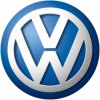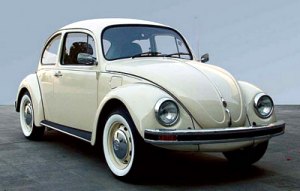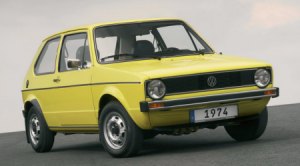
| Audi |
| Porsche |
| Skoda
(Czech) |
| SEAT
(Spain) |
| Bentley
(UK) |
| Lamborghini
(Italy) - through Audi |
| Bugatti
(France) - 45% through Porsche |
| Shanghai Volkswagen (China) - 50% |
| FAW Volkswagen
(China) - 40% |
| Scania
truck (Sweden) |
| MAN truck
(Germany) |
| Ducati (Italy) - through Audi |
 Headquarters: Wolfsburg
Headquarters: Wolfsburg
Main plants:
Germany: Wolfsburg (Golf, Tiguan, Touran), Emden (Passat), Zwickau (Golf, Passat), Dresden (Phaeton).
Belgium: Brussels (Polo, Golf)
Spain: Pamplona (Polo)
Portugal: Palmela (Eos, Sharan)
Slovakia: Bratislava (Up, Polo, Touareg)
Mexico: Puebla (Jetta, New Beetle)
Brazil: Anchieta (Gol, Polo, Fox), Curitiba (Golf, Fox)
South Africa: Uitenhage (Polo, Golf, Jetta)
China: Changchun FAW-VW (Golf, Jetta, Bora, Passat), Shanghai-VW (Polo, Santana, Passat, Touran)
2020: 9,305,400 units
2019: 10,975,300 units
2018: 10,834,000 units
2017: 10,741,455 units
2016: 10,297,041 units
2015: 10,009,605 units
2014: 10,217,003 units
2013: 9,728,250 units
2012: 9,344,559 units
2011: 8,361,294 units
2010: 7,278,440 units
2009: 6,310,000 units
2008: 6,272,000 units
2007: 6,191,618 units
2006: 5,720,096 units
2005: 5.243,000 units
2004: 5.079,000 units
2003: 5.016,000 units
2002: 4.984,000 units
2001: 5.080,000 units
2020 sales by brand (including China JV):
Volkswagen: 5,328,000 units
Audi: 1,692,800 units
Skoda: 1,004,800 units
Seat: 427,000 units
Porsche: 272,200 units
Bentley: 11,206 units
Lamborghini: 7430 units
Bugatti: 77 unit
VW commercial vehicles: 371,700 units
MAN: 118,100 units
Scania: 72,100 units
2020 production by models:
Tiguan: 754,276 units
Passat/Magotan: 477,892 units
Polo / Virtus: 467,765 units
Jetta / Sagitar: 422,908 units
Lavida: 416,209 units
Golf: 408,528 units
Bora: 329,263 units
T-Cross: 285,824 units
T-Roc: 285,299 units
Atlas/Teramont: 178,954 units
Santana: 174,966 units
JETTA: 165,681 units
Tharu/Taos: 149,781 units
Gol: 117,471 units
Lamando: 65,730 units
ID.3: 64,259 units
Up: 59,786 units
Touran: 56,833 units
Arteon/CC: 55,899 units
Saveiro: 41,146 units
Touareg: 41,136 units
Being a German company, Volkswagen group positions its brands at the premium part of the market - Audi is mass premium, Volkswagen is semi-premium while Bentley, Lamborghini and Bugatti are prestige marques. Only the Spannish SEAT and Czech Skoda target at the lower end of the market, but they still share the high quality and engineering standard of the group because of extensive platform and component sharing.
According to the requirements set by Hitler, Porsche designed a rear-engined car with an air-cooled flat-four engine. It used air cooling because the dictator thought his kingdom would soon expanded to African desert. The car was not particularly advanced, but it was designed with great attention to details, taking into reliability, economy, ease of production and maintenance into consideration. Today this car is known to the world as "Beetle", or what the American called "Bug".
In 1941, the great factory was built (out of the mandatory deposit from German people) and pilot run was completed. Unfortunately, the broke out of WW II meant it was soon converted into an arsenal. The Volkswagen car was also modified to military vehicles which was really used in the North African desert. The road car was put into shelf until the war ended.
 Volkswagen Beetle
Volkswagen BeetleAfter the war, the Volkswagen factory came under the control of British forces. The British examined the car and was not very interested to produce it in their home country, but they helped the German to rebuild the factory and renamed the town to Wolfsburg. Production of the car increased quickly, especially since it started exporting to the US, where its cult looks and good practicality made it a hit. Its sales accumulated to 1 million units in 1955, 15 million units in 1972 (which surpassed the old record held by Ford Model T) and eventually topped 21.5 million units when the last Beetle rolled off the production line in Mexico in 2003.
So far the story seems like the history of Beetle. In fact, Volkswagen was virtually a one-model company until the early 1970s. It tried to find a new design to replace the car but every time failed - the 1500 in 1961, the 411 in 1968 and the front-wheel-drive K70 in 1970. The hatchback Polo, which was based on Audi 50, relieved some pressure, but the declining sales of Beetle eventually drove the company into a loss in 1974.
 Volkswagen
Golf Mk1
Volkswagen
Golf Mk1Luckily, the same year launched the Giogiaro-designed Golf (American called it Rabit), a car that saved the company and became another core model in the following decades. In the 80s and 90s, Polo and Passat started taking some pressure off the shoulders of Golf. The product portfolio of Volkswagen became healthier.
Volkswagen acquired Auto Union in 1965 and NSU in 1969, merging them into Audi. It took nearly 3 decades to build Audi into a successful premium brand like Mercedes and BMW.
In the 1980s it started internationalising - SEAT was bought in the mid-80s, Skoda in the early 90s, then in 1998 its CEO Ferdinand Piech bought 3 marques in a row: Lamborghini, Bugatti and Bentley. Unlike the American, Volkswagen showed skills and patience to turn around these brands while maintaining their individuality.
In the late 2000s, a failed attempt of takeover by Porsche resulted in a counter takeover. Porsche became 11th brand of Volkswagen. Meanwhile, it acquired minority stake in Suzuki to strengthen its small car strategy.